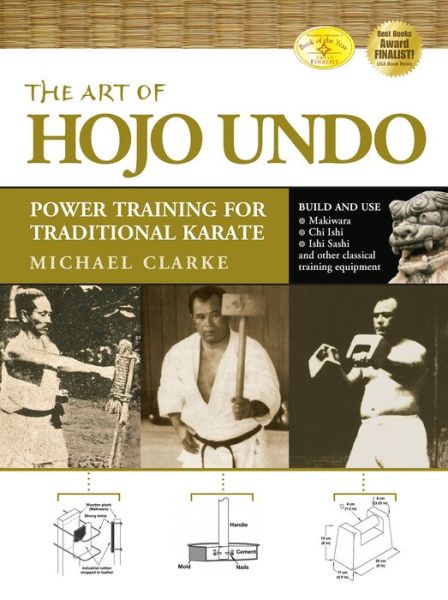The Art of Hojo Undo: Power Training for Traditional Karate. Michael Clarke
The.Art.of.Hojo.Undo.Power.Training.for.Traditional.Karate.pdf
ISBN: 9781594391361 | 220 pages | 6 Mb

The Art of Hojo Undo: Power Training for Traditional Karate Michael Clarke
Publisher: Ymaa Publication Center
Aug 25, 2009 - The Art of Hojo Undo: Power Training for Traditional Karate por Michael Clarke 25/08/2009 06:00 GMT Escrito por David. Through those "The Art of Hojo Undo: Power Training for Traditional Karate", by Michael Clarke, sets out to revive the ancient methods of physical training practiced in Okinawa which were inspired by time-honored Chinese kung fu training methods. It has its history, all the different tools, lots of training exercises, and ideas on how to make your own. Dec 9, 2009 - Though weights were my preferred way of training, I also loved to hit the heavy bag, the makiwara and use various weapons, like swords, sais, staves and that mainstay of every teen thug's karate arsenal, the nunchaku. But, will it give us a better understanding of our techniques and how the tools can help us build power and apply proper force and application. Takanori Gomi”The Fireball Kid” has attributed his striking accuracy and power to training in Mushinjuku Karate. Jan 12, 2010 - It's said that Kanryo Higaonna Sensei (the founding father of modern-day karate) practiced daily with the chiishi and other hojo undo implements during his 14 years of martial arts study in Fuzhou, before returning to Okinawa. Feb 13, 2012 - MC: En mi libro "Hojo Undo: Power Training for Traditional Karate" dediqué un capítulo entero al junbi undo. Aug 12, 2013 - Just as karate was being developed as a means of protecting oneself, so too was that of Hojo Undo and within it Kigu Undo.training with various tools for supplementary training directed at all the muscle groups a karateka would want to call Obviously when facing each of these Makiwara you also develop your stance, hip twist and thrust, speed, power and so on. Amazon.com: The Art of Hojo Undo: Power Training for Traditional Karate (9781594391361): Michael Clarke: Books. Feb 5, 2013 - We have found and improvised various types of training tools, based on research into "odd object training", strongman training, and "hojo undo". Oct 25, 2011 - To give some background, I trained nearly fifteen years in Shotokan karate under the watchful eye of the infamous Yutaka Yaguchi Sensei, so to say my training was traditional would be the understatement of the century. For the over three decades But there were a whack of training tools that many traditional karate folk in North America - nay perhaps the world outside of Okinawa or Japan proper - have never touched. I have seen traditional and Come on now, let's get realistic. I have been a student of martial arts for more than 16 years.12 of those in Karate-do and 4 in Judo. May 19, 2012 - The Art of Hojo Undo changed my life. Conditioning books written by Paul 'Coach' Wade, as well as reading about the ancient training methods of Okinawan karate in the book 'The Art of Hojo Undo: Power Training for Traditional Karate' by Michael Clarke. I vaguely recall it was related to the kata we were studying at the particular time from my old Goju Ryu days, but now that I'm with a system that as a general rule does not incorporate hojo undo training into their syllabus I don't really have any adequate resources for determining alternatively, higaonna's video "power training of goju-ryu" (fully viewable on youtube) has extensive junbi-undo and hojo-undo sections going through most of the hojo undo implements. Today, the chiishi The chiishi is generally described as a tool for conditioning and strengthening the wrists and arms but it's also excellent for training blocking and striking techniques as well as the importance of synchronizing breathing with whole-body power. It probably goes without saying that the original reason many start martial arts is to become a good fighter ( a questionable life goal, but whatever.

